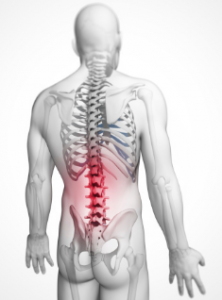Spinal fusion surgery is an operative procedure that is done to combine or fuse two or more vertebrae together. When a patient is suffering from a spinal disorder where the vertebrae has problem in the disc space, doctors usually recommend spine fusion back surgery.
With the help of this surgery the motion in problem causing part of back is eliminated which in turn helps the patient get relief from pain and discomfort.
The main reason of the patient getting relief from pain is the fact that the surgeon links the vertebrae together to help the patient get rid of his problem.
How Does Spine Fusion Work?
 The stimulation for the growth of bone between vertebrae is the main aim of spinal fusion surgery and that is what the surgeon tries to achieve during the procedure. This is why during the operation the doctors can place a piece of metal between vertebrae so as to hold them together.
The stimulation for the growth of bone between vertebrae is the main aim of spinal fusion surgery and that is what the surgeon tries to achieve during the procedure. This is why during the operation the doctors can place a piece of metal between vertebrae so as to hold them together.
This type of spinal instrumentation is quite common in a fusion surgery and this type of instrumentation is available in various types. Your doctor will recommend and go for a particular type of spinal instrumentation depending upon the back problem being treated. The number of vertebrae that are being fused together as well as age and health of the patient are factors that are usually taken into account before finalizing a spinal instrumentation.
Why Spinal Fusion Surgery Can Fail
Although spine fusion back surgery is a doctor recommended treatment option for back problem, there are still chances that a spine surgery of this kind may fail. The main complications that may arise in this type of surgery are:
Failure in the fusion of vertebrae segments: This is a major problem that can occur in a spine fusion surgery. It is often difficult to get a new bone to grow, although it is true that there are stimulants that may help in bone growth but in few cases it might not happen and the spine surgery may fail.
Area around the spine fusion (vertebrae and disc) develop problem: This possible drawback does not occur immediately after the surgery, it develops overtime and can appear full force after a few years.
